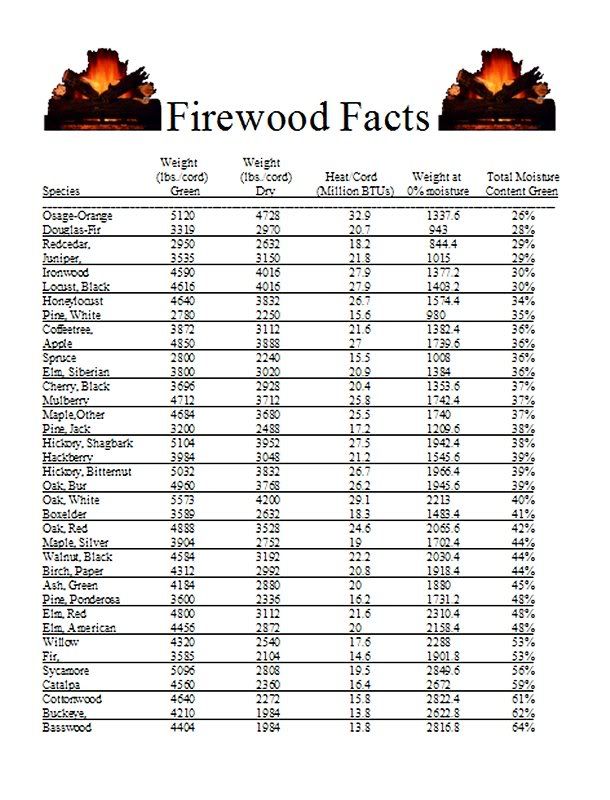Steve NW WI
Unwanted Riff Raff.
I took the U Nebraska firewood chart and put it into a spreadsheet. Out of curiosity, I wanted to know how much water is in different species of trees when green.
Here's how I calculated it. First I figured the weight per cord of totally dry (0% moisture) wood. I assumed that the "dry" weight given was 20% moisture for this purpose. That is the 3rd column over. From that I divided dry weight by green weight to get the percentage of water in green wood. This is the far right column.
EDIT: Thanks to Shari (Wife&Hubby) for cleaning up my txt file and making a nice jpeg to look at:

Kind of suprising that some softwoods and some of the hardest were at the top of the list. (I sorted for dryest to wettest.)
Part of the reason for this is we're getting to the time of year where 4,000 people will ask "what's the best wood to burn green". I'd think that the driest woods on this list would be best for burning green, as there will be less heat lost boiling water, but I'm probably not seeing some other points.
Class, discussion is now open.
BTW, I just used notepad to open the text file when I previewed the post.
Here's how I calculated it. First I figured the weight per cord of totally dry (0% moisture) wood. I assumed that the "dry" weight given was 20% moisture for this purpose. That is the 3rd column over. From that I divided dry weight by green weight to get the percentage of water in green wood. This is the far right column.
EDIT: Thanks to Shari (Wife&Hubby) for cleaning up my txt file and making a nice jpeg to look at:

Kind of suprising that some softwoods and some of the hardest were at the top of the list. (I sorted for dryest to wettest.)
Part of the reason for this is we're getting to the time of year where 4,000 people will ask "what's the best wood to burn green". I'd think that the driest woods on this list would be best for burning green, as there will be less heat lost boiling water, but I'm probably not seeing some other points.
Class, discussion is now open.
BTW, I just used notepad to open the text file when I previewed the post.
Last edited:




